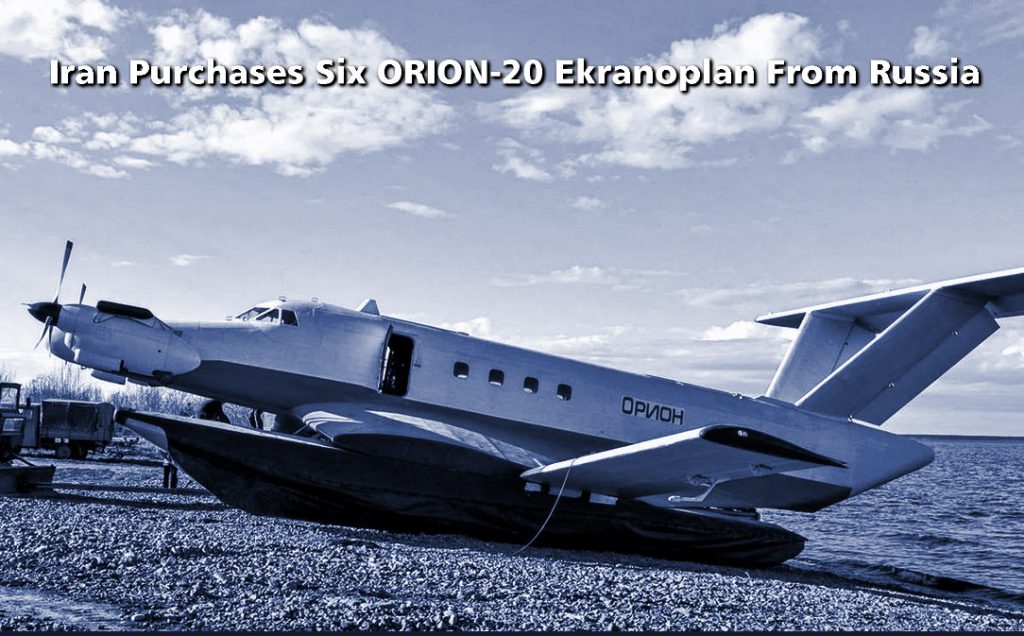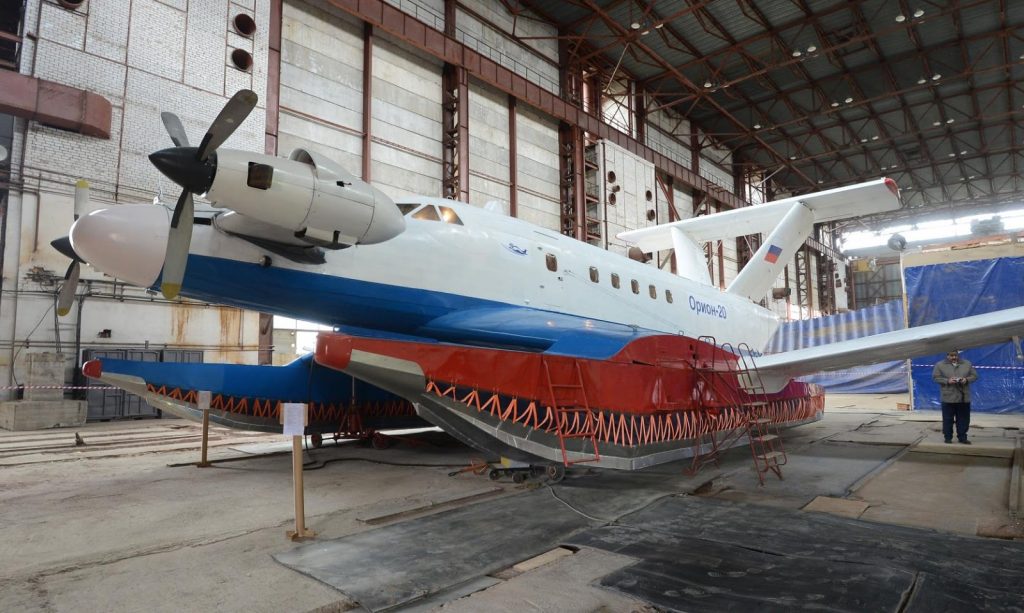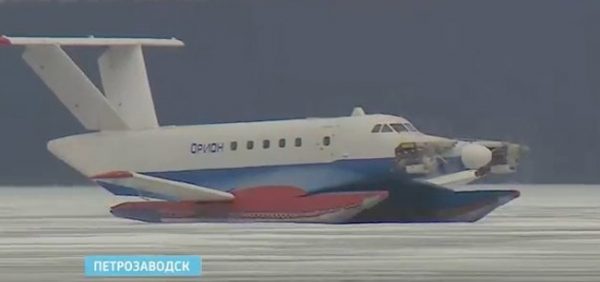
Russia has sold Iran six ekranoplan ground-effect vehicles (GEVs), RIA Novosti has reported. The model sold to Iran is the ORION-20 Ekranoplan. It has been in operation in Russia for the past few years.
Ekranoplan are needed by Iran navy to launch quick amphibious assaults across the Persian Gulf to carry special forces and hold/ occupy territory, before more forces are moved by regular ships later
The ORION-20 has a maximum speed of 180 km/h and can haul one ton of cargo, plus 12 passengers.
According to a statement from ORION: “A contract for the supply of six vehicles to Iran is being implemented. Of these, three have already been delivered and accepted by Iran.”
The navy of Iran’s Islamic Revolutionary Guard Corps (IRGC) in 2009 in a military parade showcased ekranoplans that were supposedly developed indigenously, but there was speculation that the GEVs were actually bought from Russia in an earlier order placed by Iran.
One of the big advantages for using ekranoplans in the Far East is that they do not require an airfield for take-off. The carrying capacity of ekranoplans is higher than that of aircraft. At the same time, they are faster than ships at times. Orion-20 is able to move over water, land, and ice by using a specific physical effect-shielding.
Russia Develops New Ekranoplan 2020, Is this one of the models Iran will buy ?
Russia announced the new model of the Orion-20M ekranoplan. There will be a new company created specifically for the project. The manufacturing is expected to be done in the Khabarovsk region.
Ekranoplan has fairly high load capacity and able to operate on routes that are not available for conventional vessels. The basis of the entire concept of ekranoplan is a screen effect or ground effect.
Currently, there is a discussion of assembling the head sample of the Orion-20 ekranoplan, which can take up to 50 passengers on board.
Then, it is planned to take it into pilot operation, which will be followed by certification and organization of mass production (up to 15 cars per year), with the prospect of commercial operation on routes through the Far East and the Arctic zone of Russia.
Ekranoplan is a high speed machine that can fly at a relatively small (up to several meters) altitude from the surface of water or land without contact with it— within the so-called aerodynamic screen. The device is based on a dynamic air bag, and actually combines the properties of an airplane and a boat. According to the international classification, however, it is a sea vessel.

Additionally, ekranoplan has a fairly high load capacity and is able to operate on routes that are not available for conventional vessels. Along with higher hydroaerodynamic qualities and seaworthiness than other high-speed vessels, ekranoplans almost always have the properties of amphibians. In addition to the water surface, they are able to move over a solid surface (earth, snow, ice) and even be based on it.
The basis of the entire concept of ekranoplan is a screen effect or ground effect. It is expressed in an increase in the lift of the wing when flying at a low altitude over a flat surface. It was discovered independently by almost all aviators who began to develop low-wing aircraft (low-wing planes).

One of the big advantages for using ekranoplans in the Far East is that they do not require an airfield for take-off, and in the event of a problem, they can simply sit on the water and wait for help (rather than fall and crash).
The presence of a group of launch engines in addition to the main engines allows you to safely continue the flight if one or even several of them fail. The carrying capacity of ekranoplans is higher than that of aircraft. At the same time, they are faster than ships at times— at a cruising speed of 400-600 kilometers per hour, they leave behind even the fastest hovercrafts or hydrofoils.




